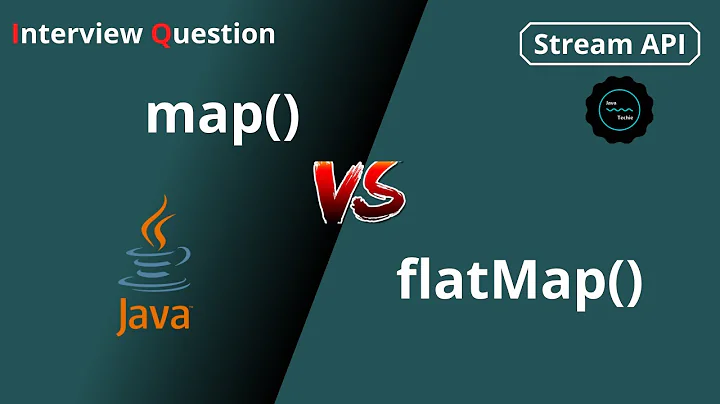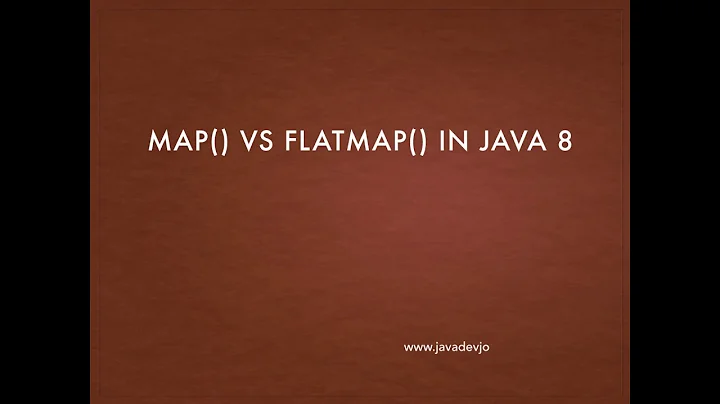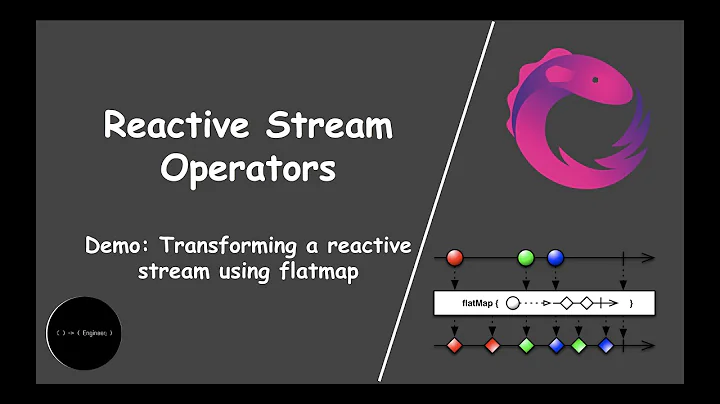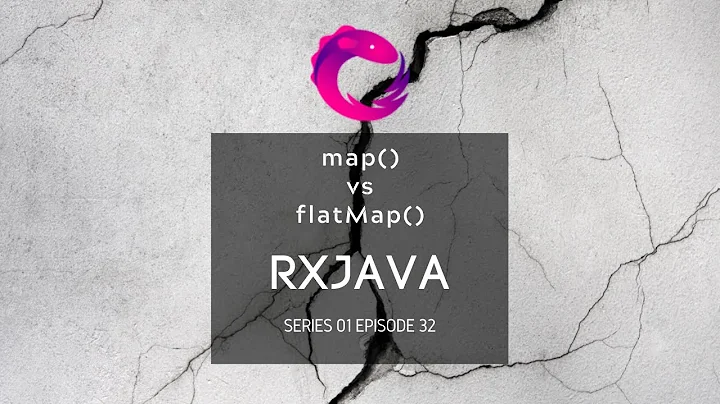What is the use case for flatMap vs map in kotlin
Solution 1
Consider the following example: You have a simple data structure Data with a single property of type List.
class Data(val items : List<String>)
val dataObjects = listOf(
Data(listOf("a", "b", "c")),
Data(listOf("1", "2", "3"))
)
flatMap vs. map
With flatMap, you can "flatten" multiple Data::items into one collection as shown with the items variable.
val items: List<String> = dataObjects
.flatMap { it.items } //[a, b, c, 1, 2, 3]
Using map, on the other hand, simply results in a list of lists.
val items2: List<List<String>> = dataObjects
.map { it.items } //[[a, b, c], [1, 2, 3]]
flatten
There's also a flatten extension on Iterable<Iterable<T>> and also Array<Array<T>> which you can use alternatively to flatMap when using those types:
val nestedCollections: List<Int> =
listOf(listOf(1,2,3), listOf(5,4,3))
.flatten() //[1, 2, 3, 5, 4, 3]
Solution 2
There are three functions in play here. map(), flatten(), and flatMap() which is a combination of the first two.
Consider the following example
data class Hero (val name:String)
data class Universe (val heroes: List<Hero>)
val batman = Hero("Bruce Wayne")
val wonderWoman = Hero (name = "Diana Prince")
val mailMan = Hero("Stan Lee")
val deadPool = Hero("Wade Winston Wilson")
val marvel = Universe(listOf(mailMan, deadPool))
val dc = Universe(listOf(batman, wonderWoman))
val allHeroes: List<Universe> = listOf(marvel, dc)
Map
allHeroes.map { it.heroes }
// output: [[Hero(name=Stan Lee), Hero(name=Wade Winston Wilson)], [Hero(name=Bruce Wayne), Hero(name=Diana Prince)]]
Map allows you to access each universe in {allHeroes} and (in this case) return its list of heroes. So the output will be a list containing two lists of heroes, one for each universe. The result is a List>
Flatmap
allHeroes.flatMap { it.heroes }
// output: [Hero(name=Stan Lee), Hero(name=Wade Winston Wilson), Hero(name=Bruce Wayne), Hero(name=Diana Prince)]
FlatMap allows you to do the same as map, access the two lists of heroes from both universes. But it goes further and flattens the returned list of lists into a single list. The result is a List
Flatten
allHeroes.map { it.heroes }.flatten()
// output: [Hero(name=Stan Lee), Hero(name=Wade Winston Wilson), Hero(name=Bruce Wayne), Hero(name=Diana Prince)]
This produces the same result as flatMap. So flatMap is a combination of the two functions, map{} and then flatten()
Related videos on Youtube
lannyf
Updated on February 27, 2020Comments
-
lannyf about 4 years
in https://try.kotlinlang.org/#/Kotlin%20Koans/Collections/FlatMap/Task.kt
it has sample of using
flatMapandmapseems both are doing the same thing, is there a sample to show the difference of using
flatMapandmap?the data type:
data class Shop(val name: String, val customers: List<Customer>) data class Customer(val name: String, val city: City, val orders: List<Order>) { override fun toString() = "$name from ${city.name}" } data class Order(val products: List<Product>, val isDelivered: Boolean) data class Product(val name: String, val price: Double) { override fun toString() = "'$name' for $price" } data class City(val name: String) { override fun toString() = name }the samples:
fun Shop.getCitiesCustomersAreFrom(): Set<City> = customers.map { it.city }.toSet() // would it be same with customers.flatMap { it.city }.toSet() ? val Customer.orderedProducts: Set<Product> get() { return orders.flatMap { it.products }.toSet() // would it be same with return orders.map { it.products }.toSet() } -
 IgorGanapolsky almost 5 yearsWhat is the use of
IgorGanapolsky almost 5 yearsWhat is the use offlattenvsflatMap? -
Kristopher Noronha almost 4 yearsIs there any performance difference between .map{ f }.flatten() vs .flatMap{ f } ?
-
 Scott Driggers over 3 years
Scott Driggers over 3 yearsflatMap(function)is the same asmap(function).flatten() -
mochadwi almost 3 yearscmiiw the former: O(2n) time complexity (doing the first n on
.mapthen.flatten) the latter: O(n) time complexity @KristopherNoronha -
Kristopher Noronha almost 3 years@mochadwi I think O notation ignores the constant, so both are O(n) as far as time is concerned... however I suspect memory/temp objects might paint a different story and that's probably the diffrentiating factor when working with large structures.
-
mochadwi almost 3 yearsagreed, the actual differentiation factor was the space constraint







